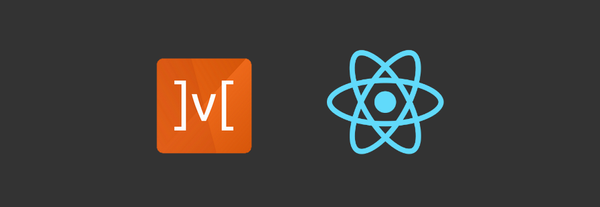Conduct Effective UX Research like a Pro
As the digital landscape continues to evolve, providing exceptional user experiences has become paramount for businesses.
User Experience (UX) research plays a crucial role in understanding user needs, preferences, and behaviors, enabling UX designers to create intuitive and delightful experiences.
In this comprehensive guide, we will delve into the world of UX research, exploring its significance, key steps, research methods, and recommended tools. Let's unlock the secrets to conducting effective UX research like a pro!
What is UX Research?
UX research is the systematic investigation of user behaviors, motivations, and requirements, aimed at informing the design process. It involves gathering insights from real users to enhance the usability, accessibility, and overall satisfaction of a product or service.
The primary goal of UX research is to bridge the gap between user expectations and design solutions, ensuring that digital experiences align with user needs and goals.
Difference between Good & Bad Research
Distinguishing between good and bad UX research is vital to derive meaningful insights. Here are key points to consider:
Good research is characterized by:
- Well-defined research plan.
- Clearly articulated research objectives.
- Comprehensive understanding of the target audience.
- Unbiased data collection and analysis.
- Accurate and reliable research findings.
Bad results often results from:
- Biased data collection methods.
- Inadequate sample sizes.
- Flawed analysis.
- Inaccurate or misleading conclusions.
UX designers at Logicwind adhere to best practices and employ robust research methodologies.
Steps of UX Research
To conduct effective UX research, a structured approach is essential. At Logicwind, our experienced UX designers follow a series of key steps:
- Define research objectives: Clearly outline the goals and questions you want to address through the research. For example, "How can we improve the on-boarding experience for our mobile app users?"
- Plan research methods: Select appropriate research methods and techniques based on the objectives and available resources. Combining multiple methods can provide richer insights.
- Recruit participants: Identify and recruit participants who represent the target audience. This ensures that research findings reflect the actual users' perspectives and behaviors.
- Conduct research: Execute the chosen research methods, such as usability testing, user interviews, or online surveys. Collect both qualitative and quantitative data to gain a comprehensive understanding of user experiences.
- Analyze and synthesize data: Analyze the collected data, identify patterns, and derive insights. Synthesize the findings to develop a holistic understanding of user needs and pain points.
- Translate insights into design solutions: Translate research insights into actionable design recommendations. Use the findings to inform design decisions and iterate on prototypes or existing interfaces.
User Experience Research Methods
User Groups
User groups, also known as focus groups or user workshops, involve bringing together a small group of representative users to facilitate in-depth discussions, idea generation, and collaborative feedback gathering.
By engaging participants in a group setting, valuable insights can be gained through shared experiences, contrasting viewpoints, and collective brainstorming.
For example, in the development of a social media platform, a user group could be organized to explore user preferences for content sharing and interaction, leading to valuable insights on improving the platform's features.
Usability Testing
Usability testing involves observing users as they interact with a product or prototype to identify usability issues, evaluate task performance, and gather qualitative feedback.
By conducting usability tests, UX designers can uncover pain points, usability bottlenecks, and areas of improvement in the user interface.
For instance, a mobile app developer may conduct usability testing to understand how users navigate through different screens, identify confusion points, and refine the app's layout and navigation structure.
User Interviews
User interviews allow researchers to engage in one-on-one conversations with individual users to gain a deeper understanding of their needs, goals, behaviors, and preferences. Interviews can be structured or semi-structured, allowing for open-ended discussions and probing specific topics of interest.
By conducting user interviews, UX designers can uncover valuable insights and uncover user motivations that may not be captured through other methods.
For example, in the development of an e-commerce website, user interviews could reveal insights about user trust factors, product discovery preferences, and desired features.
Online Surveys
Online surveys are a quantitative research method that enables UX designers to collect data from a large sample of users efficiently. Surveys can be used to gather demographic information, assess user satisfaction, measure task completion rates, or gather feedback on specific features or experiences.
For instance, a software company may distribute an online survey to gather feedback on the overall satisfaction of its users, allowing them to identify areas for improvement and prioritize future updates.
User Personas
User personas are fictional representations of target users based on research and data. They embody key characteristics, motivations, goals, and behaviours of specific user segments.
User personas provide a shared understanding of the target audience and guide design decisions by considering user needs and preferences.
For example, a UX designer working on a fitness app may create user personas representing different fitness levels, goals, and motivations, ensuring that the app's features and content cater to diverse user profiles.
Which method & tools should you use for UX Research?
The choice of research method depends on the research objectives, target audience, available resources, and project constraints. It is often beneficial to combine multiple methods to gain a comprehensive understanding of users.
At Logicwind, our experienced UX designers carefully select research methods based on project requirements and goals, ensuring that the methods used align with the research objectives. Here are some methods and tools that our designers recommend:
- User Interviews
- User Personas
- Empathy Maps
- User Journey Maps
- Product Assessment
- Heuristic Evaluation
- UX Audit
- User Stories
Final Thoughts
“Effective UX research is the backbone of exceptional user experiences. By employing a combination of research methods and tools, we can gain valuable insights into user needs, behaviors, and preferences, ultimately informing design decisions that result in intuitive and delightful digital experiences." - Harshil Patel, Lead UX Designer at Logicwind.
At Logicwind, we understand the importance of conducting UX research like true experts. By adhering to best practices, utilizing a range of research methods, and employing the right tools, we strive to deliver user-centric designs that exceed expectations.
Remember, UX research is an ongoing process that should be integrated throughout the entire design lifecycle. By continuously gathering user insights and incorporating them into the design process, we can create products and services that truly resonate with our target audience.
FAQs
Q: What is UX research and what's its purpose?
A: UX research, or User Experience research, is a systematic process of gathering and analyzing data about users' behaviors, needs, and preferences to inform the design and development of user-centered products or services. The purpose of UX research is to gain insights into users' perspectives, motivations, and pain points, enabling designers to create intuitive, effective, and delightful user experiences. By understanding user behavior and preferences, UX research aims to bridge the gap between user expectations and design solutions, ultimately improving the usability, accessibility, and overall satisfaction of digital products.
Q: What are the pros of UX research?
A: The benefits of UX research are numerous and impactful. Firstly, it helps uncover user needs, allowing designers to create products and services that align with user expectations. UX research also identifies usability issues and pain points, enabling designers to make informed design decisions and improve the user interface. Additionally, it helps prioritize features and functionalities based on user preferences, leading to more effective and efficient designs. UX research fosters empathy by understanding users' perspectives, resulting in more user-centric and inclusive experiences. Overall, UX research mitigates design risks, increases user satisfaction, and contributes to the overall success of a product or service.
Q: What proactive UX research looks like?
A: Proactive UX research involves conducting research early and consistently throughout the design process. It is an ongoing effort to gather insights from users and apply them to inform design decisions. Proactive UX research starts with identifying research objectives, planning research methods, and recruiting participants who represent the target audience. It includes activities such as user testing, interviews, surveys, and iterative design based on user feedback. By adopting a proactive approach, designers can anticipate user needs, identify potential issues, and validate design decisions to ensure user satisfaction and a seamless user experience.
Q: What is the best UX research method?
A: There isn't a one-size-fits-all answer to this question as the choice of UX research method depends on various factors such as research objectives, target audience, available resources, and project constraints. Each method has its strengths and limitations. However, a combination of methods often yields the most comprehensive insights. Usability testing is widely regarded as one of the most effective methods as it directly observes user interactions with a product or prototype. User interviews provide valuable qualitative insights, while online surveys enable gathering quantitative data from a larger sample size. User personas help create a shared understanding of the target audience. The best UX research method is the one that aligns with the research objectives, suits the project context, and generates the most actionable insights for the design team.




